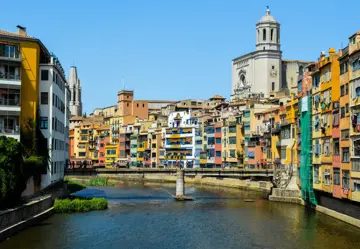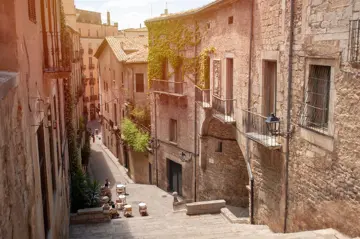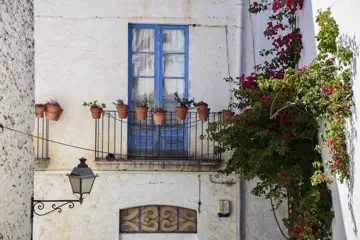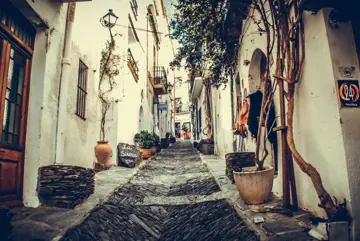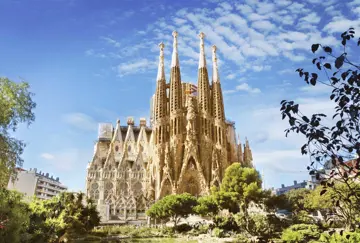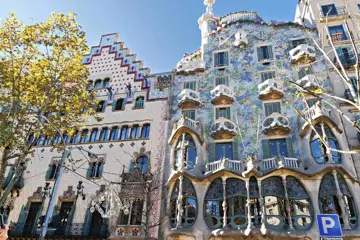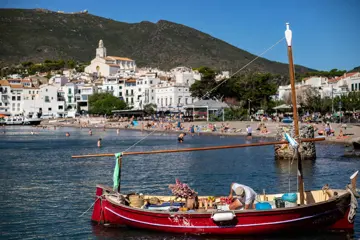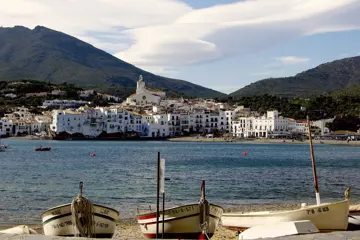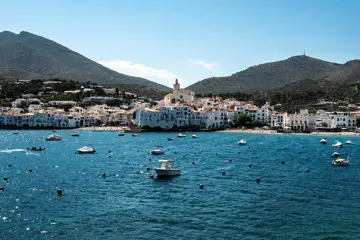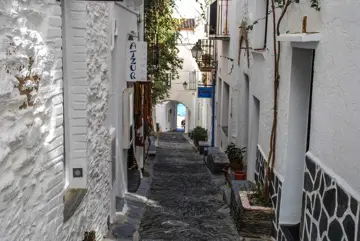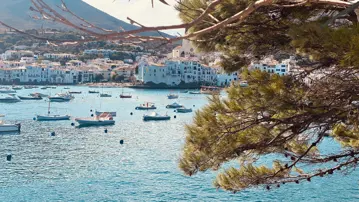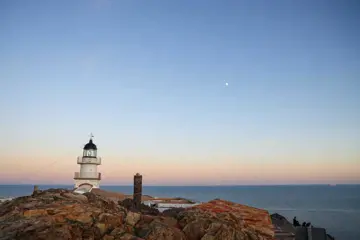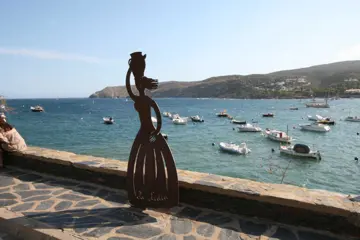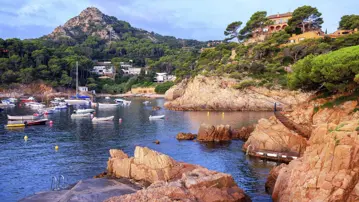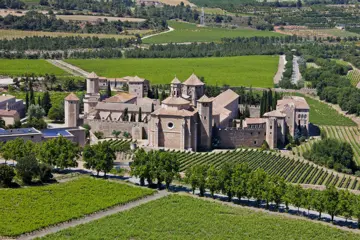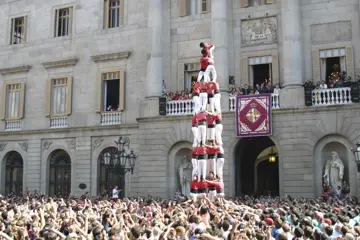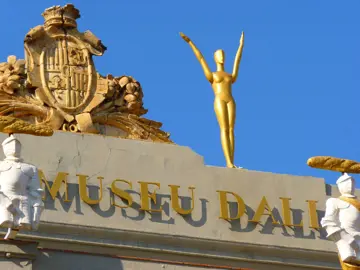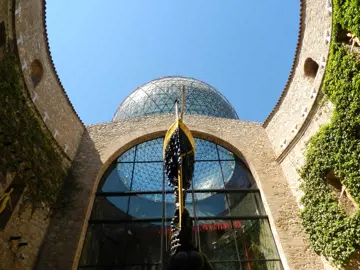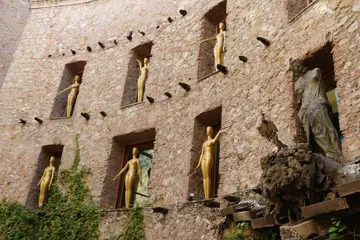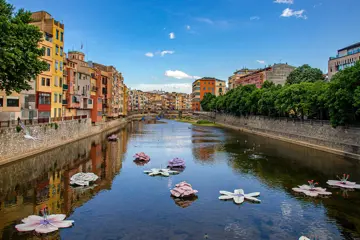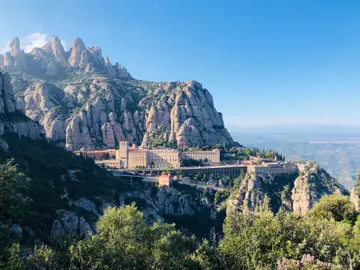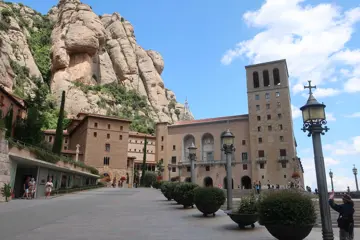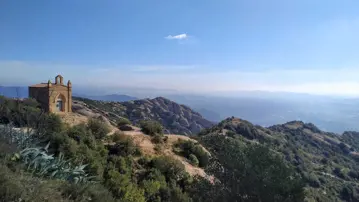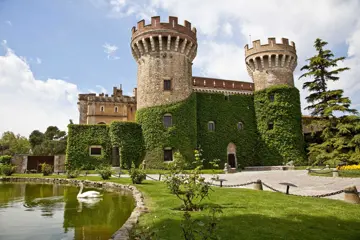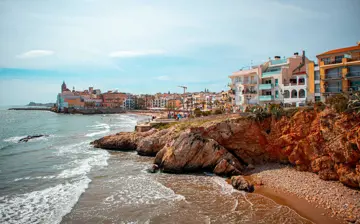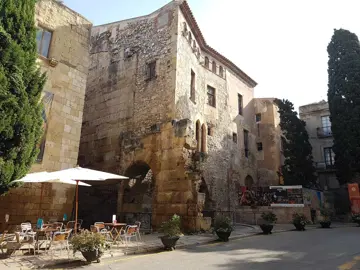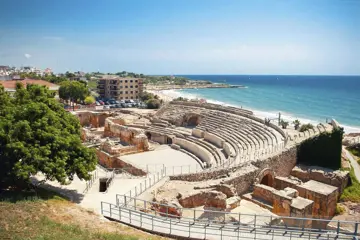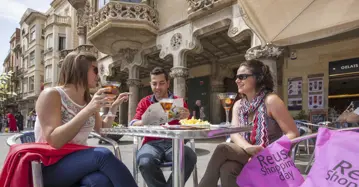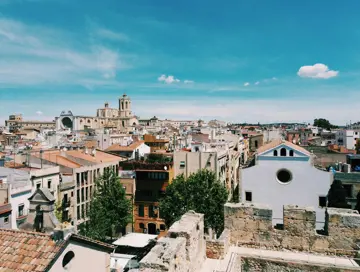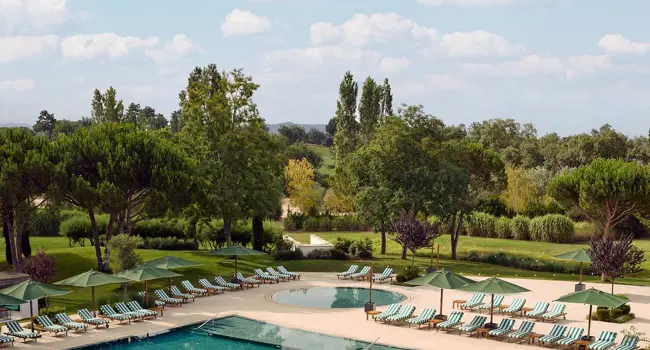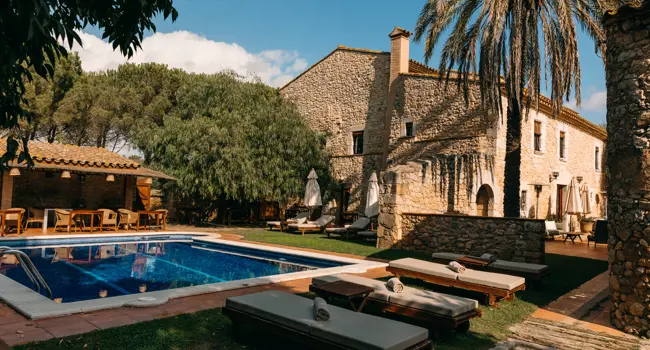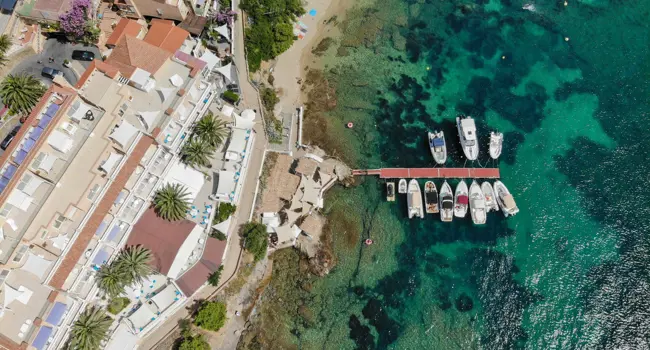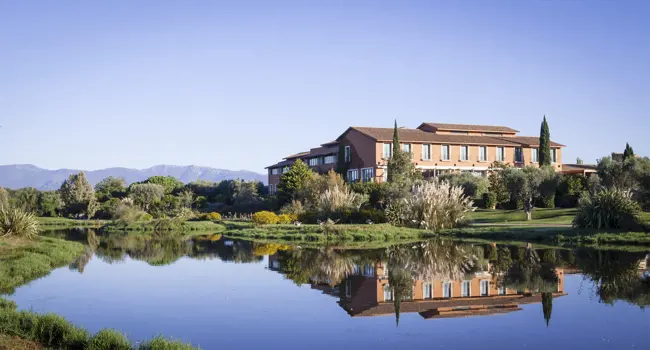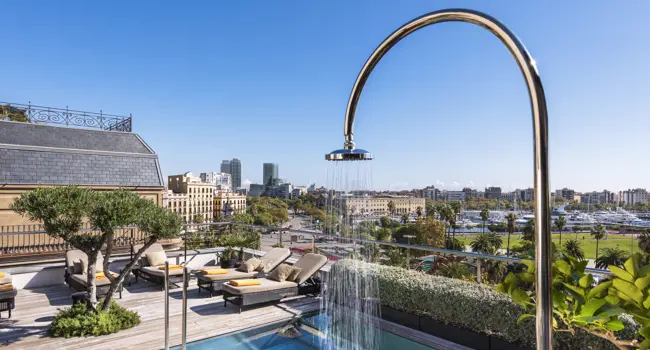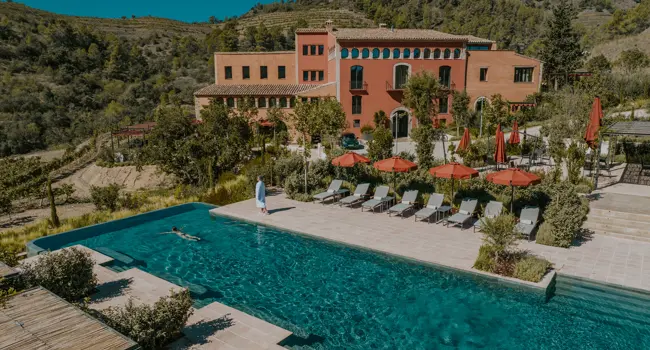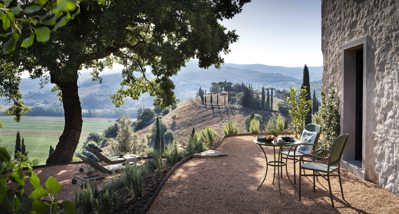What do Salvador Dalí, Picasso and Gaudí have in common? Catalonia was both their home and their muse. Not surprising, with so much overwhelming natural beauty and one of the most refined cuisines in all of Spain.
Where else but Barcelona to start your exploration of Catalonia? The city is a vibrant mix of tradition and modernist architecture. This quickly becomes clear on a walk past world-famous monuments such as the MACBA museum, the Sagrada Família, the Passeig de Gràcia and Park Güell.
On the way to the spectacular 'holy' mountain Montserrat, a stop at the Colònia Güell is a must for all Gaudí lovers. The crypt in his unfinished church here, is classified as a Unesco World Heritage Site. Onwards to the fishing village of Cadaqués, Dalí's favourite place. By the way, the Dalímusuem in Figueres, a few kilometres away, is the largest surrealist museum in the world. You can also take a hike to the Cap de Creus nature reserve, another important source of inspiration for numerous artists.
Of course, there is also extensive room for gastronomy. In Girona, with its maze of narrow alleys, colourful facades and picturesque bridges, you can dine at one of the many world-renowned gourmet restaurants. And in Sant Sadurní d'Anoia, the mecca of cava production, enjoy a refreshing glass of Freixenet or Codorníu.
Finally, you will discover some beautiful seaside resorts and heavenly white sandy beaches. In Sitges, for instance, where Picasso was very much at home and where local entrepreneur Don Facundo Bacardí built beautiful houses and palaces. Your experience trip ends with a day of relaxation on the golden beaches of the Costa Brava.
Day 1: Departure to Barcelona
You arrive at the airport and take public transport or a taxi to your hotel. You will be introduced to this picturesque and hip city: a pearl of art history. You will stay here for 3 nights in a hotel of your choice. Also discover the car variant of this tour.
Day 2 & 3: Barcelona, tradition and avant-gardism
A walk in the historic centre, that is the Ciutat Vella and the atmospheric Gothic Quarter, with narrow streets and dated houses on either side. These elements contrast with the Placita de la Seu (the cathedral), where the Sardana is still danced on Sunday mornings, and the MACBA museum (for contemporary art), designed by American architect Richard Meier. By the way, Barcelona is the city of modernist architecture, of which architects Antoni Gaudí and Domenech i Montaner are the main representatives. Take enough time to take in this wonderful world of architecture: the famous Sagrada Família, the Passeig de Gràcia, Casa Batllò and Casa Milà (La Pedrera) and Park Güell, the extraordinary Palau de la Musica Catalana concert hall, the Fundació Antoni Tapies and the Hospital Santa Creu i Sant Pau, perhaps the city's 'happiest' hospital. You can take a breather at the Front Maritime, which was completely redesigned on the occasion of the 1992 Olympic Games, or on Montjuïc, the 'Jewish Mountain', a 173m-high hill with great views over the port and the city. This is where the 1929 World's Fair was held, the remains of which are well worth seeing: the Bauhaus Pavilion by Ludwig Mies Van der Rohe, the Museu Nacional de Art de Catalunya and the Fundació Joan Miró, one of the figureheads of 20th-century avant-gardism.
Day 4: From industrial heritage to the spiritual heart of Catalonia
Fascinated by Gaudí? Then the Colònia Güell, on the way to Montserrat, is a must see: the dream of businessman Eusebi Güell, founder of Park Güell, was to establish a pleasant industrial village for his textile workers and their families: the most beautiful structure on this 'colony site' is the unfinished church, designed by Gaudí, the crypt was even declared a Unesco World Heritage Site! As much as Table Mountain is to South Africans, Montserrat is to Catalonia. During the Spanish civil war and the oppression of dictator Franco, this mountain was the only place where Catalan could be spoken and where liberation plans were forged. Today, this 'holy mountain' is the refuge of numerous pilgrims who venerate the 'Black Madonna' here. The spectacularly located mountain is famous not only for the monastery but also for its unique silhouette. On a clear day, you can see the Pyrenees and even Mallorca. Definitely worth a visit is the Museum of Montserrat, a modernist building by Josep Puig i Cadafalch. Continue towards the Costa Brava where you will stay 3 nights.
Day 5: Around Cadaqués, Dali's favourite place
You start the day, best at the opening time of the Dalímusuem in Figueras, the most visited and largest surrealist museum in the world. In the fishing village of Cadaqués, not only Dalí but also Picasso found his inspiration: you can take a pleasant stroll down the steep streets to the cove where boats line the beach. Dali's former villa is barely 3 km away in Port Lligat. Since 1997, this villa has been a museum, the Casa Museum Salvador Dalí. From here, a hiking trail leads to the protected nature reserve of Cap de Creus, which has been an important source of inspiration for numerous artists and poets. Continue to Sant Pere de Rodes, a beautiful place with ruins of an impressive Benedictine monastery. Optionally, return past El Castell Peralada de Roses, a museum castle and Roses, a popular seaside resort.
Day 6: Girona and the Baix Empordà, Spain's Tuscany
The image of Girona is its picturesque views of Onyar River bridges and ochre-coloured rows of facades. The old town centre, especially the Jewish quarter - the best preserved in Europe - is a tangle of narrow alleys, leafy patios and endless staircases. Besides the cathedral, you can also visit Banys Árabs, a bathing complex dating back to 1194 and a copy of the traditional Muslim bathing houses. Girona has a lovely shopping centre as well as numerous gourmet restaurants of world renown. In the fertile plains of the Empordá you will find numerous quiet medieval farming villages that are in stark contrast to the sometimes overcrowded seaside resorts of the Costa Brava: La Bisbal with its ceramic tradition, medieval Begur, Monells, Pals, Peratallada, all are worth a visit. The coast is also at its most beautiful here, and the Costa Brava lives up to its name: a rugged coast with beautiful coves, exclusive beaches and turquoise waters.
Day 7: Cava and bohemians
On the way to Sitges, stop in Sant Sadurní d'Anoia, the mecca of cava production with Freixenet and Codorníu among the big names. A tour of Freixenet's installations takes about one hour and is done by train. Of course you will taste the different types of cava. On to Sitges, a special seaside resort with a beautiful white sandy beach and numerous beautiful bath houses and palaces, this thanks to the famous entrepreneur from Sitges, Don Facundo Bacardi, who made his fortune in Cuba with his rum distillery. Like many other wealthy people, he built beautiful homes and palaces in the Cuban architectural style on his return. Sitges has always attracted numerous artists, including Picasso: you can still taste a pinch of the bohemian atmosphere at the Santiago Rusiñol house, today the Museu Cau Ferrat. A visit to the summer residence of Pau Casals, today a museum, allows you to enter into the life of one of the greatest cello players of the 20th century. Today, Sitges is still a beautiful seaside resort with a cosy old centre with plenty of Mediterranean atmosphere and a notorious nightlife, particularly popular with the gay scene.
Day 8: Art Nouveau and Cistercians
Visit Tarragona, once an important Roman capital. Almost everything here recalls its Roman heyday: the impressive city walls, amphitheatre and aqueduct, etc . Continue to Reus, birthplace of Gaudí, with an interesting interactive information centre - the Gaudí Centre - that tells you more about his life and work. Reus is a typical Catalan town with beautiful modernist buildings. Through the beautifully fortified town of Montblanc, where Saint George killed 'the dragon', and with a nearly intact city wall with battlements, to the monastery of Poblet, one of the most beautiful Cistercian monasteries in Catalonia with a beautiful location in a nature reserve. As a young architect, Gaudí came here often and had grand plans for its restoration. Return via the Monasterio de Santes Creus, perhaps Catalonia's second most impressive Cistercian monastery.
Day 9: The golden beaches
The Costa Dorada, literally 'golden coast' has no less than 216 km of beaches and is consequently designated for a relaxing day by the sea. Or you can visit the Palau de Maricel, one of Sitges' most emblematic buildings and a prestigious setting for numerous meetings and events.
Day 10: Going home
You return your rental car and say goodbye to this beautiful country. Still want to stay a few extra days? We'll take care of it!
Why book with Caractère?
- Best price guarantee
- Caractère extras
- Unique collection of boutique hotels in Europe
- Just one phone call or email away from our enthusiastic travel experts
- New finds every month
- 30 years specialist in Europe
- Pay safely
- No extra or hidden fees
- Flexible cancellation (ex. non-refundable)

